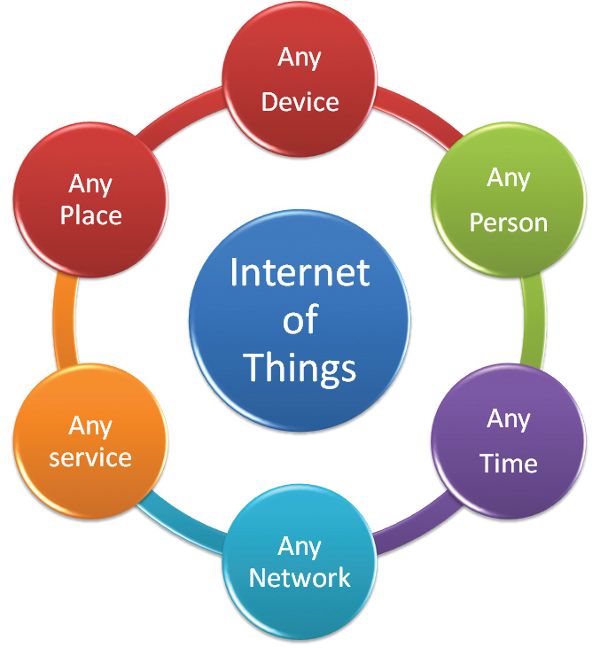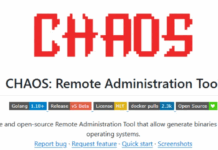As IT infrastructures become increasingly complex, ensuring they are secure and scalable is more critical than ever in today’s digital landscape. Open source tools offer cost-effective, flexible, and powerful solutions, enabling organisations to secure their networks, automate processes, and maintain compliance—all without the high costs associated with proprietary solutions.
In today’s digital world, as the reliance on cloud computing, remote work, and digital services continues to grow, so does the complexity of maintaining a secure and efficient infrastructure. At the same time, open source tools are gaining tremendous traction as they offer powerful, flexible, and cost-effective solutions to these challenges. Unlike proprietary software, these tools allow organisations to customise and control their systems while benefiting from community-driven improvements and innovations.
Securing your network with open source tools
In the digital age, network security has become one of the most critical aspects of building a secure IT infrastructure. Organisations are increasingly vulnerable to cyberattacks, data breaches, and network intrusions, making it essential to implement robust network security measures.
Firewalls and VPNs for securing the network perimeter
The network perimeter is the first line of defence against external threats, and open source firewalls offer a reliable solution to monitor and control incoming and outgoing network traffic. pfSense, OPNsense, and WireGuard are three powerful open source tools that provide comprehensive network security features.
pfSense
pfSense is a free, open source firewall and router platform based on FreeBSD. It offers advanced security features like VPN support, load balancing, and intrusion detection.
OPNsense
Similar to pfSense, OPNsense is another open source firewall and routing platform based on FreeBSD. It includes features such as intrusion prevention (IPS), traffic shaping, and support for multiple VPN protocols.
WireGuard
WireGuard is a lightweight and high-performance VPN protocol that focuses on simplicity and speed. It is often integrated into firewalls and routers, providing secure remote access for employees or connecting remote sites securely.
Detecting and preventing unauthorised access with IDS and IPS
Intrusion detection systems (IDS) and intrusion prevention systems (IPS) are designed to detect and block malicious activities and unauthorised access attempts within a network. Tools like Snort, Suricata, and Zeek (formerly known as Bro) provide open source solutions for real-time traffic analysis and threat detection.
Snort
Snort is one of the most popular open source IDS/IPS tools.It can be used to detect a wide range of attacks, including denial of service (DoS), buffer overflows, and SQL injections.
Suricata
Suricata is an advanced IDS/IPS tool that can handle high-speed networks and offer real-time traffic analysis. It is multi-threaded, allowing it to scale and analyse large volumes of network data. Suricata’s multi-protocol support makes it a valuable tool for detecting complex network attacks.
Zeek (formerly Bro)
Zeek is an open source network monitoring tool that focuses on network traffic analysis and security monitoring. Unlike traditional IDS/IPS tools, Zeek focuses on the network context and provides detailed logging of network sessions.
Monitoring network traffic in real time
Network traffic analysis plays a crucial role in identifying unusual or malicious behavior. Open source tools like Wireshark, ntopng, and Nagios provide comprehensive monitoring solutions that allow network administrators to capture and analyse traffic patterns and detect potential threats.
Wireshark
Wireshark is a widely used open source network protocol analyser. It allows administrators to capture and inspect the packets flowing through their network in real time.
ntopng
ntopng is a high-performance network monitoring tool that provides real-time traffic analysis and visualisation. It supports flow-based monitoring, which gives network engineers a better understanding of traffic patterns, bandwidth usage, and potential bottlenecks.
Nagios
While Nagios is primarily known for system monitoring, it also provides capabilities for network traffic monitoring. By integrating with other tools like Wireshark or ntopng, Nagios can become a comprehensive network monitoring solution.
Identifying network weaknesses with vulnerability scanning
Vulnerability scanning is another critical component of network security, helping to identify weaknesses in your network infrastructure before attackers can exploit them. Open source tools like OpenVAS, Nikto, and Nessus are invaluable for conducting proactive vulnerability assessments.
OpenVAS
OpenVAS is a powerful open source vulnerability scanner that performs thorough scans on network devices, servers, and applications.
Nikto
Nikto is a web server scanner that focuses on detecting vulnerabilities within web applications. It scans for common web server issues, such as insecure headers, outdated software, and missing security patches.
Nessus
Nessus is a widely used vulnerability scanner. While its commercial version is well-known, there is also an open source version available for individual use.
DevSecOps: Integrating security into the DevOps pipeline
DevSecOps is the practice of integrating security into the DevOps pipeline, ensuring that security measures are automated and enforced throughout the software development and deployment process. Traditional DevOps focuses on speeding up development and operations, but it may neglect security, leaving vulnerabilities exposed. DevSecOps bridges this gap by incorporating security practices into the CI/CD (continuous integration/continuous deployment) pipeline, ensuring that security is built in. Key principles of DevSecOps include:
Shift left
Security should be integrated as early as possible in the development lifecycle. This approach, known as ‘shift left’, encourages developers to identify and address vulnerabilities during the design and coding stages, rather than waiting until the testing or production phase.
Automation of security testing
By automating security checks, organisations can ensure that security is continuously tested and validated throughout the development pipeline. This eliminates the need for manual checks and reduces the risk of vulnerabilities slipping through the cracks.
Collaboration across teams
In a traditional development process, development, security, and operations teams often work in silos. DevSecOps encourages collaboration among these teams, fostering a culture where everyone is responsible for security.
There are a variety of open source tools that help automate security processes within the DevOps pipeline, from configuration management and code analysis to vulnerability scanning and incident management.
- Configuration management tools: Puppet, Chef, and Ansible
- Continuous integration and continuous deployment (CI/CD) tools: Jenkins, GitLab, and CircleCI
- Security information and event management (SIEM) tools: ELK Stack and Graylog
Building a secure and scalable cloud infrastructure
As organisations move towards cloud-based infrastructure, managing and securing cloud environments becomes a critical task. Cloud environments offer scalability, flexibility, and cost-efficiency, but they also introduce new challenges related to security, compliance, and resource management. Open source tools play a crucial role in building and maintaining secure and scalable cloud infrastructures, enabling organisations to automate deployment, manage resources, and enforce security policies at scale.
OpenStack
OpenStack is an open source cloud computing platform that enables organisations to deploy and manage private clouds. It provides a suite of services for computing, networking, storage, and identity management, making it an ideal choice for organisations that want to create and manage their own cloud infrastructure.
Its key features are:
Compute (Nova)
OpenStack Nova manages virtual machines (VMs) and instances in the cloud, providing scalable compute resources.
Storage (Cinder and Swift)
OpenStack provides block storage (Cinder) and object storage (Swift) for managing cloud data.
Networking (Neutron)
Neutron manages networking services, including IP address management, DNS, and load balancing.
Identity and access management (Keystone)
OpenStack Keystone provides authentication and authorisation services, ensuring that users have secure access to cloud resources.
Kubernetes
Kubernetes is an open source platform for automating the deployment, scaling, and management of containerised applications. Kubernetes abstracts the underlying infrastructure and allows organisations to run applications on any cloud platform, whether it’s a private cloud, a public cloud, or a hybrid environment. It has become the de facto standard for container orchestration and plays a crucial role in managing modern cloud-native applications. Key features include:
Container orchestration
Kubernetes manages the lifecycle of containerised applications, automating tasks like deployment, scaling, and load balancing.
Self-healing
Kubernetes automatically restarts failed containers, replaces containers, and reschedules them to healthy nodes to ensure high availability.
Automated scaling
Kubernetes can scale applications up or down automatically based on demand, ensuring that cloud resources are used efficiently.
Terraform
Terraform is an open source Infrastructure as Code (IaC) tool that allows users to define and provision cloud infrastructure through code. Terraform is cloud-agnostic and can be used to manage resources across various cloud providers, including AWS, Azure, Google Cloud, and OpenStack. With Terraform, developers and infrastructure teams can define their cloud infrastructure using declarative configuration files, allowing them to automate provisioning, updates, and scaling. Its key features are:
Infrastructure as Code (IaC)
Terraform allows you to write infrastructure configurations as code, making it easier to version, test, and share infrastructure definitions.
Multi-cloud support
Terraform supports multiple cloud providers, enabling organisations to manage hybrid and multi-cloud environments from a single codebase.
State management
Terraform tracks the state of the infrastructure, ensuring that the actual infrastructure matches the desired state defined in the configuration files.
Simplifying network configuration and management with network automation
As IT infrastructures grow in size and complexity, network automation has become a key factor in managing and securing networks efficiently. Manual configuration of network devices and services is time-consuming and prone to errors that can lead to security vulnerabilities and operational inefficiencies. Open source tools like Ansible and NetBox are revolutionising the way network configurations are managed by enabling automation, ensuring consistency, and reducing the possibility of human error.
Ansible
Ansible is an open source automation tool that simplifies configuration management and automation of IT infrastructure. It uses a simple, YAML-based language (called Ansible Playbooks) to define automation tasks and configurations, making it easy for network administrators to automate a wide range of networking tasks.
Its key features for network automation are:
Declarative language
Ansible’s declarative approach allows administrators to define the desired state of the network, which the tool automatically configures. For example, you can specify that a particular firewall rule should be in place, and Ansible will ensure that the network configuration meets this requirement.
Agentless architecture
Ansible operates without requiring agents to be installed on network devices. It connects to devices via standard protocols like SSH or WinRM, making it easy to automate tasks on network devices without additional setup.
Multi-vendor support
Ansible supports a wide range of network devices and vendors, including Cisco, Juniper, Arista, and others. This makes it ideal for automating network configuration in heterogeneous environments.
NetBox
NetBox is an open source IPAM (IP address management) and DCIM (data centre infrastructure management) tool that helps organisations manage and visualise their network infrastructure. NetBox is designed to provide a unified solution for tracking the physical and logical components of a network, making it easier to manage IP addresses, devices, connections, and much more. Its key features are:
IP address management (IPAM)
NetBox allows network administrators to manage and track IP addresses across large networks. It supports the allocation of IP address ranges, subnets, and assignments to specific devices and network interfaces.
Device and rack management
NetBox tracks physical devices, racks, and data centre layouts, providing visibility into the physical infrastructure. This helps administrators quickly identify where devices are located and how they are connected
Logical network representation
In addition to physical infrastructure management, NetBox also helps administrators visualise the logical network, including VLANs, interfaces, and connections. This allows for better planning and understanding of the network topology.
Building a comprehensive security operations centre with open source tools
A security operations centre (SOC) is a centralised unit responsible for monitoring, detecting, and responding to security incidents across an organisation’s IT infrastructure. This centre plays a critical role in ensuring the security and integrity of networks, systems, and applications by providing real-time visibility into security events and ensuring a rapid response to potential threats.
A comprehensive SOC typically includes several key components.
Real-time monitoring
Continuous surveillance of network traffic, endpoints, and systems to detect anomalies and potential threats.
Threat detection
The ability to identify threats in real-time by analysing logs, network traffic, and system events.
Incident response
Coordinating responses to security incidents, including containment, remediation, and root cause analysis.
Forensics analysis
Gathering data related to security incidents to understand the nature of the attack and prevent future occurrences.
Compliance and reporting
Ensuring compliance with regulatory requirements and creating reports on security activities, incidents, and threats.
Open source tools can be used to manage and integrate these components into a cohesive security monitoring solution. By combining several tools, organisations can build a SOC that meets their specific security requirements while reducing costs and increasing efficiency.
To sum up, by leveraging open source tools and adopting best practices in network automation, security monitoring, and incident response, organisations can build resilient, scalable, and secure IT infrastructures. The flexibility and customisation offered by these tools provide the foundation for long-term success in securing modern digital environments.














































































